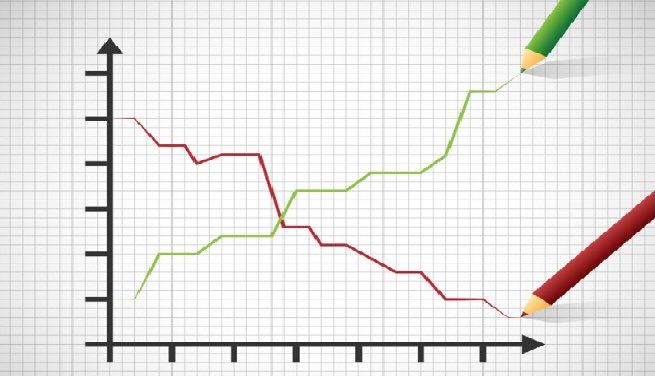MarketLens
Dow Jones Hits Record High as Tame Inflation Boosts Investor Confidence: Key Drivers and Market Outlook
On Friday Dow Jones Industrial Average (DJIA) reached a record high, closing at 42,313.00 points. This milestone was achieved amid a backdrop of encouraging economic indicators, particularly subdued inflation data, which has bolstered investor confidence. This report delves into the factors contributing to this record high, the performance of other major indices, and the broader economic context. It also examines the implications of these developments for future market trends and investor sentiment.
Introduction
Economic Indicators and Market Performance
Subdued Inflation Data
One of the primary drivers behind the DJIA’s record high was the release of encouraging inflation data. The Personal Consumption Expenditures (PCE) price index, the Federal Reserve’s preferred measure of inflation, showed a modest increase of 0.1% in August 2024. This was in line with economists’ expectations and marked a year-over-year increase of 2.2%, slightly below the anticipated 2.3%. This data suggests that inflation is under control, alleviating concerns about potential overheating in the economy.
The subdued inflation data has significant implications for monetary policy. With inflation remaining within manageable levels, the Federal Reserve is less likely to implement aggressive interest rate hikes, which can stifle economic growth. Instead, the Fed may continue its current approach of gradual rate cuts, as evidenced by the recent reduction in the fed funds rate for the first time in four years.
GDP Growth and Economic Optimism
In addition to the favorable inflation data, other economic indicators have contributed to the positive market sentiment. The U.S. economy expanded by 3% year-over-year in the second quarter of 2024, reflecting robust economic activity. This growth rate, coupled with the tame inflation data, has fueled optimism about the economy’s ability to achieve a “soft landing” – a scenario where economic growth slows to a sustainable pace without triggering a recession.
The combination of strong GDP growth and controlled inflation has created a favorable environment for equities. Investors are increasingly confident that the economy can continue to grow without the need for restrictive monetary policies, which has led to increased demand for stocks and higher valuations.
Performance of Major Indices
Dow Jones Industrial Average (DJIA)
The DJIA’s record high of 42,313.00 points represents a gain of 137.89 points, or 0.33%, on Friday. This milestone is part of a broader trend of strong performance for the index, which has risen by approximately 0.6% for the week. Year-to-date, the DJIA has gained 4,623.46 points, or 12.3%, reflecting sustained investor confidence and robust economic fundamentals.
S&P 500 and Nasdaq Composite
While the DJIA reached new heights, the performance of other major indices was mixed. The S&P 500 dipped slightly by 0.13% to 5,738.17 points, and the Nasdaq Composite fell by 0.39% to 18,119.59 points on Friday. Despite these declines, both indices have shown resilience over the past week, with the S&P 500 rising by approximately 0.6% and the Nasdaq advancing nearly 1%.
The divergence in performance between the DJIA and the other indices can be attributed to sector-specific factors. The technology sector, which has a significant weighting in the Nasdaq Composite, experienced some weakness, particularly in chip stocks like Nvidia, which dropped 2.1%. However, the broader market sentiment remains positive, supported by strong economic data and expectations of continued monetary easing.
Market Sentiment and Investor Behavior
Federal Reserve’s Monetary Policy
The Federal Reserve’s recent actions have played a crucial role in shaping market sentiment. The decision to cut interest rates by half a point has been well-received by investors, as it signals the Fed’s commitment to supporting economic growth. Lower interest rates reduce borrowing costs for businesses and consumers, which can stimulate investment and spending, thereby boosting economic activity.
The bond market has also responded positively to the Fed’s actions, with Treasury yields decreasing. The 10-year Treasury yield eased to 3.75% from 3.80%, reflecting expectations of continued monetary easing. Lower yields make equities more attractive relative to bonds, further supporting stock prices.
Investor Confidence and Risk Appetite
Investor confidence has been bolstered by the combination of favorable economic data and supportive monetary policy. The CNN Fear & Greed Index, which measures investor sentiment, indicated a “greed” reading, suggesting that investors are increasingly willing to take on risk. This shift in sentiment has driven demand for equities, particularly in sectors that are poised to benefit from a low-interest-rate environment.
Small-cap stocks, as represented by the Russell 2000 index, have also performed well, gaining 0.67% to reach a one-week high. Small-cap stocks typically benefit from lower interest rates, as they often have higher growth potential and are more sensitive to changes in borrowing costs. The strong performance of small-cap stocks further underscores the positive market sentiment and investor confidence in the economic outlook.
Implications for Future Market Trends
Potential for Continued Gains
The current economic environment suggests that the DJIA and other major indices could continue to see gains in the near term. The combination of controlled inflation, robust GDP growth, and supportive monetary policy creates a favorable backdrop for equities. As long as these conditions persist, investors are likely to remain optimistic, driving demand for stocks and pushing valuations higher.
However, it is important to note that market conditions can change rapidly. Any unexpected economic shocks, geopolitical events, or shifts in monetary policy could alter the current trajectory. Investors should remain vigilant and be prepared to adjust their strategies in response to changing conditions.
Sector-Specific Considerations
While the overall market outlook is positive, sector-specific factors will continue to play a significant role in determining individual stock performance. For example, the technology sector, which has been a major driver of market gains in recent years, may face headwinds if concerns about valuations and regulatory scrutiny intensify. On the other hand, sectors that are more sensitive to interest rates, such as financials and real estate, could benefit from the current low-rate environment.
Investors should consider diversifying their portfolios to mitigate sector-specific risks and take advantage of opportunities across different areas of the market. By maintaining a balanced approach, investors can better navigate the complexities of the current economic landscape and position themselves for long-term success.
Conclusion
The Dow Jones Industrial Average’s record high of 42,313.00 points on Friday, is a testament to the resilience and strength of the U.S. stock market. This achievement has been driven by a combination of favorable economic indicators, supportive monetary policy, and robust investor confidence. While the performance of other major indices has been mixed, the overall market sentiment remains positive, reflecting optimism about the economy’s ability to achieve sustainable growth without triggering a recession.
As we look ahead, the key factors to watch will be the trajectory of inflation, the Federal Reserve’s monetary policy decisions, and the performance of different market sectors. By staying informed and adaptable, investors can navigate the evolving economic landscape and capitalize on opportunities for growth. The current environment presents a unique set of challenges and opportunities, and those who are prepared to respond to changing conditions will be well-positioned to achieve their investment goals.
Related Articles
Category
You may also like
No related articles available
Breaking News
View All →No topics available at the moment






